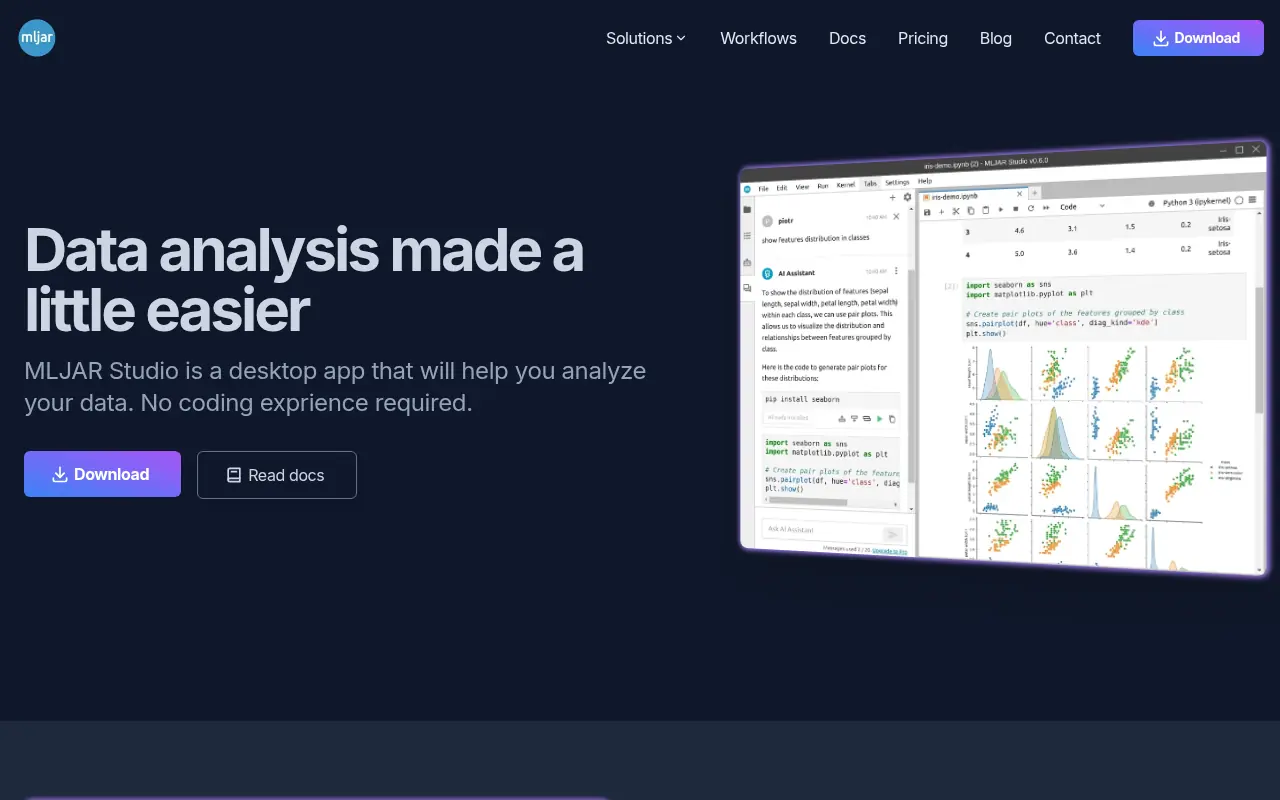MLJAR
What is MLJAR?
MLJAR is a comprehensive platform for automated machine learning (AutoML) and data analysis, available as both a Python package and a desktop application. Its mission is to make machine learning accessible by automating the most complex parts of model development: data preprocessing, feature selection, model training, and deployment. MLJAR helps users—from novice analysts to experienced data scientists—speed up their workflows through no-code and code-assisted modes. The platform features AutoML capabilities for tabular data, advanced visualization tools, and an AI assistant for generating code snippets and troubleshooting. All core modules, including AutoML, are open-source and compatible with mainstream Python environments. MLJAR ultimately aims to democratize data science by reducing technical barriers and ensuring robust, documented, and explainable models.
How to use MLJAR?
To use MLJAR effectively, install the 'mljar-supervised' Python package or download the MLJAR Studio desktop application, then prepare your tabular dataset and upload or import it into the tool. Define your machine learning objective (e.g., classification or regression), select or customize the preferred automation mode, and launch the analysis. The platform will automatically handle data preprocessing, feature engineering, model training, and evaluation, generating detailed reports and visualizations. Users can interact with results, refine features, and deploy selected models directly from the interface or via the provided API.
MLJAR's Core Features
Open-source automated machine learning (AutoML) for classification and regression.
Auto preprocessing, feature selection, and missing value imputation.
Supports a wide variety of ML algorithms, including ensembles and neural networks.
Intelligent code snippets and troubleshooting via built-in AI assistant.
Multiple automation modes: Explain, Compete, Perform, and Optuna.
Automated, shareable ML documentation and reports.
Interactive data exploration and advanced visualizations.
Model interpretability, SHAP-based feature importance, and fairness metrics.
No-code interface with Python API for advanced workflows.
Auto-saving and loading of models for efficient experiment tracking.
Seamless deployment capabilities for production.
MLJAR's Use Cases
- #1
Training and comparing multiple machine learning models on tabular data
- #2
Automating feature selection and engineering for production-grade ML pipelines
- #3
Quickly generating exploratory data analysis reports and visualizations
- #4
Deploying trained models as ready-to-use solutions for business or research
- #5
Participating in data science competitions with optimized model selection
- #6
Documenting and sharing ML experiments and findings with collaborators
- #7
Diagnosing datasets for missing values and data quality issues
- #8
Creating reproducible automated ML workflows for enterprise or academic settings
Frequently Asked Questions
Analytics of MLJAR
Monthly Visits Trend
Traffic Sources
Top Regions
| Region | Traffic Share |
|---|---|
| United States | 12.51% |
| United Kingdom | 6.24% |
| Russia | 6.21% |
| India | 5.79% |
| Vietnam | 4.17% |
Top Keywords
| Keyword | Traffic | CPC |
|---|---|---|
| ipynb to pdf | 79.2K | $3.76 |
| matplotlib colors | 32.9K | -- |
| how to host jupyter notebook online | -- | -- |
| how to save jupyter notebook as pdf | 1.9K | -- |
| mljar | 240 | -- |






